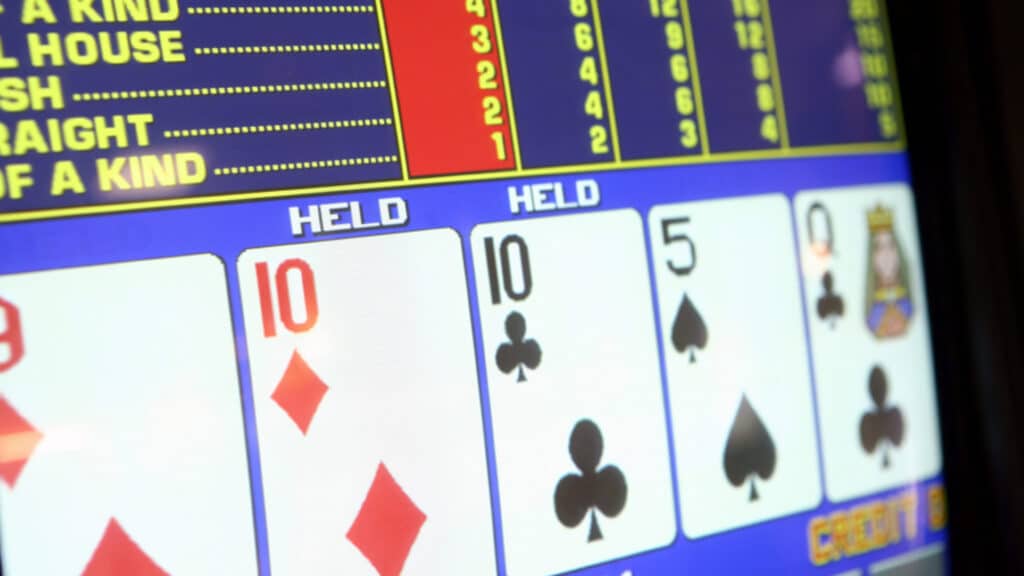Online video poker is one of the most exciting and rewarding games in both land-based and online casinos. However, mastering multi-hand play in video poker takes skill, strategy, and practice. As players move from single-hand to multi-hand video poker games, the dynamics of the game change, and a new level of complexity emerges. In this comprehensive guide, we will explore how to efficiently play multi-hand video poker, the strategies to use, the differences compared to single-hand play, and tips to help you improve your chances of winning. Whether you're a beginner or an advanced player, this guide will offer valuable insights to enhance your video poker experience.
What is Multi-Hand Video Poker?
Before diving into strategies, let’s first define what multi-hand video poker is. Multi-hand video poker is an enhanced version of the classic single-hand video poker, where you play multiple hands simultaneously. While in standard video poker, you only have one hand to play at a time, multi-hand versions allow players to play anywhere from 3 to 100 hands at once. This increases both the excitement and potential for payouts, as it provides more opportunities to hit winning hands across multiple decks.
Popular Multi-Hand Video Poker Variants
Some of the most common multi-hand video poker variants include:
- Multi-Strike Video Poker: This variant allows players to progress through several levels of gameplay with increasing payouts.
- Deuces Wild Multi-Hand: In this game, twos (deuces) act as wild cards and help form winning hands. The multi-hand version increases the excitement by allowing multiple hands to be played simultaneously.
- Jacks or Better Multi-Hand: One of the most popular video poker games, Jacks or Better, can also be played in multi-hand mode. The goal is to get a pair of Jacks or better to win.
- Bonus Poker Multi-Hand: This variant offers larger payouts for four-of-a-kind hands and also supports multi-hand play.
How Multi-Hand Video Poker Differs from Single-Hand Play
While multi-hand video poker is similar to single-hand video poker in terms of the rules and basic gameplay, the main difference lies in the increased number of hands you're playing simultaneously. Here are some of the key differences between single-hand and multi-hand play:
- Multiple Hands: In multi-hand video poker, you’re playing more than one hand, which means more chances to hit winning combinations.
- Increased Bet Size: Because you're betting on multiple hands at once, your overall bet size increases. For instance, if you’re playing five hands, you’ll need to bet five times the base wager.
- Higher Variance: Multi-hand play increases the volatility of the game. While you might have more opportunities for a payout, you’re also more likely to experience swings in your bankroll.
- Strategy Complexity: The strategy for multi-hand play is more complex than single-hand video poker, as you need to account for multiple hands and maximize the potential of each hand simultaneously.
Effective Strategies for Multi-Hand Video Poker
To maximize your chances of success in multi-hand video poker, you’ll need to adjust your strategy. Playing multiple hands means you have more opportunities to win, but you also have more chances to make mistakes. Here are some strategies that can help improve your efficiency and win more often:
1. Understand the Paytable
Before you start playing, always check the paytable for the specific multi-hand video poker game you’re playing. Each variation will have a slightly different payout structure. Understanding the paytable is essential to ensure you're playing optimally and adjusting your strategy based on the payouts for various hands. For example, some multi-hand games may offer higher payouts for four-of-a-kind or royal flushes, while others might focus more on three-of-a-kind or full houses.
2. Start with a Conservative Betting Strategy
If you're new to multi-hand video poker, it's a good idea to start with smaller bets until you get the hang of the game. Playing more hands at once means your bankroll will be spent faster, so starting small will help you minimize risk and allow you to test different strategies. For example, if you normally bet $1 per hand, start by betting $0.25 per hand while you learn the ropes.
Once you're comfortable with the gameplay, you can increase your bet size. Keep in mind that increasing your bet means more risk, so it’s important to balance your wager size with your bankroll and playing style.
3. Focus on High-Value Hands
In multi-hand video poker, you’ll need to focus on maximizing the value of your hands. For instance, when you get dealt a hand with a pair of Jacks or better, always hold onto the pair and discard the other cards. The same goes for other high-value hands, such as three-of-a-kind, full houses, or flushes. By focusing on higher-paying hands, you increase the probability of hitting substantial payouts across all your hands.
Remember that holding on to high-value hands is crucial, but also ensure that you’re not holding onto low-value cards that could potentially give you a better hand. This is especially true when playing multiple hands, as discarding low-value cards can give you the chance to hit higher-paying combinations.
4. Optimize Hand Strategy Across All Hands
In multi-hand play, you must consider each individual hand’s potential. While it’s important to have a solid strategy for each hand, don’t neglect the others. For instance, if you get a pair of Jacks or better in a single hand, you should always hold those cards. But in multi-hand play, you might have a hand with a similar setup across all hands. The goal is to maximize the chances of hitting winning combinations across all the hands being played simultaneously.
5. Manage Your Bankroll Effectively
Bankroll management is critical when playing multi-hand video poker. With multiple hands being played simultaneously, the potential for losing streaks is higher. To manage your bankroll effectively:
- Set a Budget: Decide on a set amount of money you're willing to risk in a session and stick to it. This will help you avoid spending too much on a single game.
- Adjust Your Bet Size: If you're on a losing streak, consider lowering your bet size to conserve your bankroll. Conversely, if you're on a winning streak, you can increase your bet size to take advantage of the momentum.
- Track Your Wins and Losses: Keeping track of your wins and losses during a session will help you stay within your budget and make informed decisions.
6. Use Strategy Charts
One of the best ways to improve your multi-hand video poker strategy is by using strategy charts. These charts show you which cards to hold and which to discard based on the hand you’re dealt. For example, the optimal strategy for Jacks or Better will tell you whether to keep a single high card or discard low-value cards to improve your chances of hitting a royal flush.
Strategy charts are available for almost every version of video poker and can help you play efficiently. They are especially useful for new players, as they provide a clear decision-making guide, allowing you to concentrate on playing rather than second-guessing your choices.
7. Know When to Walk Away
In multi-hand video poker, the high volatility can result in swings that can deplete your bankroll if you don’t know when to stop. It’s crucial to have a plan for when you hit a losing streak and be prepared to walk away. Setting a win goal and loss limit before starting a session will help you keep your gambling experience enjoyable and financially manageable.
Fun Facts About Multi-Hand Video Poker
- Increased Payouts: Multi-hand video poker can provide higher payouts in terms of volume since you're playing several hands at once. For example, hitting a royal flush on five hands is much more lucrative than hitting it on just one hand.
- Strategy Complexity: Multi-hand video poker is not just about playing more hands—it also requires a more advanced understanding of the game’s strategy, as you need to focus on multiple opportunities to optimize your chances of winning.
- More Chances to Win: Playing more hands means more chances to hit a winning combination, which can lead to more frequent payouts over time.
Conclusion
Mastering multi-hand video poker takes patience, strategy, and practice. By understanding the differences between single-hand and multi-hand play, implementing optimal strategies, and effectively managing your bankroll, you can maximize your chances of success. Whether you're a beginner or an advanced player, multi-hand video poker offers a thrilling and potentially rewarding experience. Remember to start slow, focus on high-value hands, and always manage your bankroll wisely to increase your odds of winning in the long run.
So, next time you sit down for a multi-hand video poker session, keep these strategies in mind, and enjoy the excitement of playing multiple hands at once!



